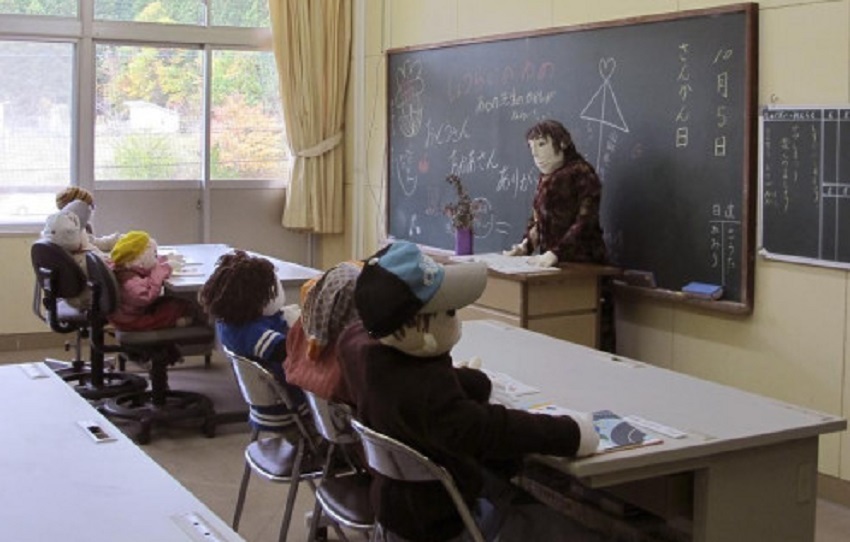Crisis is looming

Population statistics
Worldwide, birthrates have been halved in the past 50 years. There are now 59 nations, with 44% of the world's population, with below-replacement fertility. In this century, the world's population will begin to decline. At a certain point, the decline will become rapid. We may even reach population free-fall in our lifetimes. For some countries, population decline is already a reality. Russia is losing three-quarters-of-a-million people a year. Its population (currently 145million) is expected to fall by one-third by 2050.
United Nations World Population Ageing Report
In 2007, the United Nations released its global population estimates in a report entitled World Population Ageing revealing an alarming population shift that will have serious world-wide consequences within the near future. The report indicates that people above 60 years old are starting to outnumber children, those under age 15. By 2047 old people will outnumber children on a global scale, the report states, although developed countries already reached this mark in 1998.
By the year 2000 the number of old people had tripled in the world since 1950. Only six year later, they had increased by another 100 million. The rate of their increase is 2.6% per year versus the 1.1% increase of the rest of the population. In addition, even those over 60 years are aging, and the number of people aged 80+ is most rapidly increasing.At present the median age worldwide is 28 years, a number that is expected to rise to 38 by 2050. The oldest country is Japan, with a median age of 43, while the youngest is Uganda, with a median age of 15.
Read a summary of the UN population report here...
Falling birthrates in Asia
Japan's population falls by record 244,000 in 2013
The BBC reported in early 2014 that the Japanese population had fallen by nearly a quarter of a million in 2013 alone.
The Japanese Health ministry said an estimated 1,031,000 babies were born last year - down some 6,000 from the previous year. Meanwhile, the number of people that died last year was 1,275,000 - a rise of around 19,000 from 2012.
Japan's population has been shrinking for several years now. If current trends persist it will lose a third of its population in the next 50 years. A quarter of the population is currently aged over 65 and that figure is expected to reach nearly 40% by 2060.

Scarecrow people are slowly taking over Japanese village
Hundreds of families once called Nagoro, a Japanese village, home, but over time, people moved to the cities and those who stayed behind started to die.
Consequences of a demographic decline
These numbers will have a serious effect on the working population, which will be forced to bear an increasingly heavy burden of retirees. By 2050 the ratio of workers between 15 and 64 to older persons will have decreased from 12 to 1 in 1950 to a mere 4 to 1.
Western Europe's population grows dramatically grayer. Now about one-sixth of the population is 65 and older. By 2030, that could be one-fourth and by 2050, almost one-third.
By the mid-point of this century, 16% of the world's population will be over 65. By 2040, there will 400 million elderly Chinese who had no children to look after them. If present low birthrates persist, the European Union estimates there will be a continent-wide shortfall of 20 million workers by 2030.
Who will operate the factories and farms of the future. Who will develop natural resources. Who will care for a graying population? A burgeoning elderly population combined with a shrinking work force will lead to a train-wreck for state pension systems.
This only skims the surface of the way demographic decline will change the face of civilization.

Spain's family culture collapses
Mercatornet reported in May 2014 that fewer marriages, broken marriages, and the difficulty of reconciling work and family life are leading reasons why the family in Spain is in deep trouble according to a new report from the Institute for Family Policies (IPFE).
An explosion in the number of abortion, very little family support and assistance is also contributing heavily to the destruction of the birth rate and family life.
Is One-Child Policy increasing violent crime
China's One-Child Policy may be making the country more violent and a 1 percent increase in the ratio between the sexes leads to a 5 percent increase in the crime rate, according to a report in New Republic
Cuba considers incentives for couples to have more children
“We have programs of family planning since 1964 that we have been using and the abortion which is free and universal and we have had access to it since 1962,” sociologist Marta Nunez said. “And also, there is a housing problem. The housing problem is really important because once a new couple decides to get married they don’t have a place of their own to live. So, this makes it difficult to have a child.”
In a report by Michael Voss of CCTV America, abortion is one of the chief causes of Cubas aging population and drastic low birth-rates. There are 100,000 less people on the island today than a decade ago (2004) and that is not due to emigration.
Links
- About that Overpopulation Problem
- Britain needs millions more immigrants to reduce strain of ageing population
- The Economist - A billion shades of grey
- A generation of old people is about to change the economy
- US older population to double by 2050 - Census Report
- Russians give employees day off to go home and make babies
- Are South Koreans at risk of extinction?
- An aging Europe in Decline